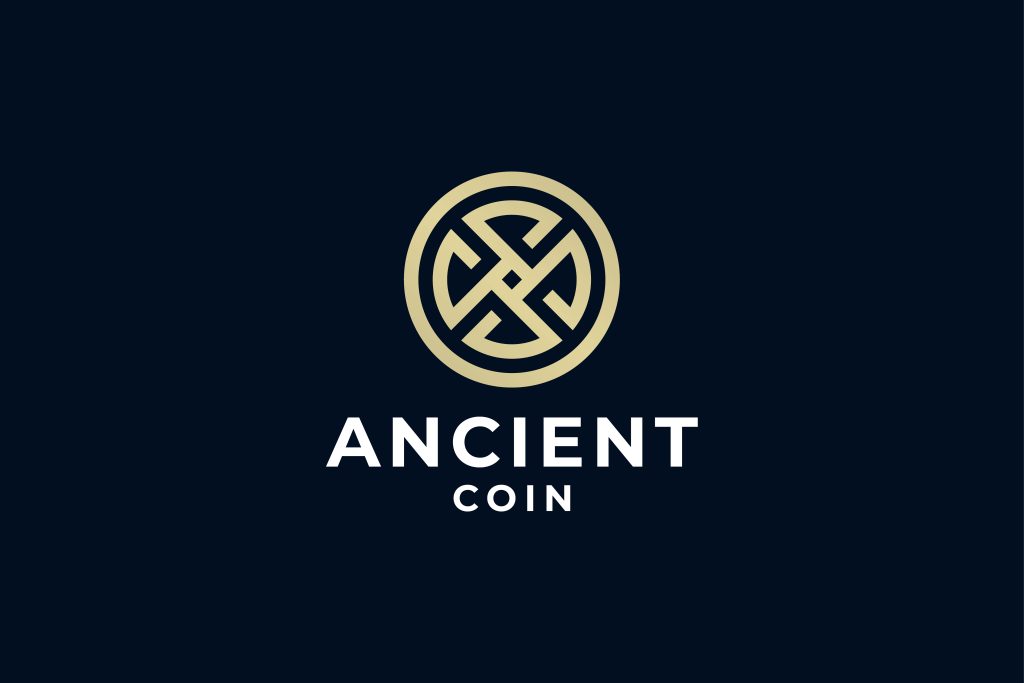The history of ancient Roman coins is also the history of roman trade and the roman economy; as well as a reflection of advances in Roman metallurgical technology, propaganda and roman art.
Given the vast range of matter it is easiest to split the subject into two broad areas:
- Rise of Roman coinage until the end of the Roman Republic
- History of Roman coins from the beginning of the Roman Empire through to the Byzantine Empire ( coins of the Roman empire of the East)
This article provides a general overview of Roman coins and some detail of the history of Roman coins through to the end of the Republican Period.
Various phases of the development of Roman coins
There are some discrete moments in Roman history which could be (arbitrarily) chosen to describe the history of Roman Coins:
- Kingdom and early Republic: Archaic pseudo-coinage or proto-money. Bartering with goods and lumps of bronze, through to use of the Aes Signatum
- Early Republican: ~300BC – 212BC when the Punic wars and the wars against Hannibal forced a rethink of Roman coinage.
- Late Republican to the Reforms of Emperor Augustus (heir to Julius Caesar)
- Princip ate: Imperial through to 3rd Century (ie when empire reaches greatest expanse)
- Late empire to the fall of Rome. The decline of Roman coins in the Western empire.
- Roman influence on early medieval coins
- Roman Byzantine coins and the legacy of the Eastern Roman empire.
1. Kingdom and Early Republic
As with all civilizations, trade in central Italy and early Rome trade was based on bartering, particularly of livestock, with agreed equivalents between Ox and Sheep, or the number of beasts required as legal fines. Some commodity goods such as salt, essential for food preservation, may have held a similar trading role also (hence the word ‘salary’).
To confirm the above we have archaeological studies into archaic Rome, showing clear evidence of salt production along the Tiber and close to the Forum Boarium (meat markets) which also came to be associated with money lending and banking – hence the moneylenders arch “Argentari”. These links are also attested in numerous modern words like “Salary” (from salt) and pecuniary (from Pecos – sheep).
The Greek colonies of southern Italy were already using silver coinage when central Italy was still in a relatively undeveloped bartering stage. The earliest shift towards the use of metal for exchanges was actually around the 8th Century BC, through simple misshapen lumps of bronze or copper, now commonly known as “Aes Rude” which was relatively easy to mine but of variable weight and quality, containing considerable Iron and other impurities. The next development was the “Aes Formatus” where the lump had a basic ingot or various shapes, possibly looking like a stylized animal. Finally “Aes Signatum” around the 5th Century developed – where some form of the symbol was part of the moulded shape.
2. Early Republican and the war against Hannibal
As the Romans of the Roman Republic expanded and traded across Italy they came into increasingly regular contact with other coinage systems. What we know as traditional ‘Roman coinage’ only appeared around the 3rd century BC, possibly as a consequence of the economic conditions during the Punic wars: Along with “Aes Grave” and “Aes Signatum” the Romans issued some early coins of bronze and silver with inscriptions such as ROMA or ROMANO and traditional imagery such as deities: Janus, Jupiter, Minerva, Hercules, Mercury, Bellona or Roma.
These early Roman coins were struck using Greek technology around the Campania region and spread northwards across various mints also including the Etruscan city of Volterra to the north of Rome.
The goddess Juno was associated with money, particularly under the epithet of Juno Moneta –“moneo” meaning “advice” since the goddess had warned the Romans to wage war with justice and hence they would not find themselves short of money – from which we have the words for “Money” and “Mint”.
The Punic wars and particularly the war against Hannibal (218-201BC) triggered a long-lasting reform of Roman coinage structured around the silver Denarius.
3. The development of Republican Roman coins
Roman coinage throughout the rest of the Republican period developed at a great pace, also in line with the progress of Roman dominions and of the developing social structure and public offices:
- Coins often had the letters “SC” standing for “Senatus Consultus” – ie by authority of the Senate.
- Moneyers and mint officials were instituted – three such magistrates were elected each year with the power to issue coinage. The coins often including the name of the magistrate as well as symbols denominating the mint and issue.
As already mentioned the backbone of the monetary system was the silver Denarius:
The more typical coins were the As or Aes. Ten Aes made a silver Denarius (Dena meaning ten), 25 Denarii made a Gold Aureus. There were intermediate coins also, the Aes was halved (“Semis”) and quartered (“Quadrans”). The Sestertius was 2.5 Aes, so four of them made a Denarius. The “Quinarius” was half a Denarius, ie 5 Aes or 2 Sestertii.
Growing dominions also meant increasing access to precious metals such as Silver and Gold which could be used to strike coinage of special value with.
It was only with Julius Caesar that the living ruler’s profile really started coming into its own as a powerful element of propaganda which lasted throughout the rest of the empire, into the middle ages and our current times.
Some coins have imagery which can help us, for example the image of the Rostra or even the temple of Capitoline Jupiter. On the flip side there are some which remain ambiguous for example we can only guess at the true image of Nero’s wives since there are only rare examples of them being represented on his coinage and it is unclear which of them it may have been.

